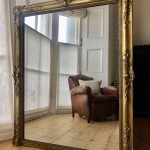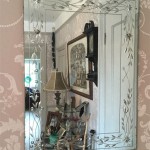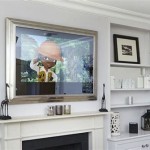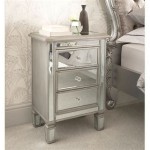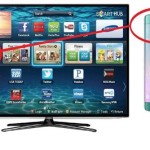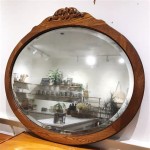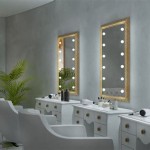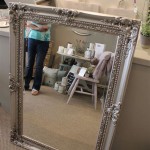Can You Glue Mosaic Tiles to a Mirror Wall? A Comprehensive Guide
Adhering mosaic tiles to a mirror wall presents a unique set of challenges and possibilities. The inherent smoothness and non-porous nature of glass require careful consideration of adhesive selection, surface preparation, and installation techniques. A successful project hinges on understanding these factors to ensure a durable and aesthetically pleasing result. This article provides a detailed exploration of the process, materials, and considerations involved in gluing mosaic tiles to a mirror wall.
Mirrors, typically composed of a glass substrate with a reflective coating on one side, offer a visually expansive and light-enhancing element in interior design. The addition of mosaic tiles can further enhance the aesthetic appeal, creating intricate patterns, borders, or focal points. However, unlike porous surfaces such as drywall or wood, the smooth, non-absorbent surface of a mirror necessitates specific adhesives and techniques to achieve a lasting bond. The choice of adhesive is paramount, as it must adhere strongly to both the mirror and the mosaic tiles while resisting moisture, temperature fluctuations, and potential stresses.
Before commencing any installation, it is crucial to assess the condition of the mirror wall. Any existing damage, such as cracks, chips, or delamination of the reflective coating, can compromise the adhesion and structural integrity of the tiled mosaic. In such cases, repair or replacement of the damaged mirror section may be necessary before proceeding. Furthermore, the mirror's mounting system must be adequately robust to support the additional weight of the mosaic tiles and adhesive. If the mirror is inadequately secured, reinforcement or alternative mounting methods should be implemented before applying any tiles.
Key Point 1: Adhesive Selection and Compatibility
The selection of an appropriate adhesive is the most critical factor in successfully gluing mosaic tiles to a mirror wall. Standard tile adhesives, often designed for porous surfaces like ceramic or stone, may not provide sufficient adhesion to glass. Therefore, specialized adhesives formulated for non-porous surfaces are essential. Several types of adhesives are commonly recommended for this application, each with its own advantages and disadvantages:
Mirror Mastic: This adhesive is specifically designed for bonding mirrors to various substrates, including glass, drywall, and wood. Mirror mastic typically contains solvents that can etch the mirror's reflective coating, creating a stronger mechanical bond. However, it is imperative to use mirror mastic that is specifically formulated to be safe for use on mirrors, as some formulations can cause irreversible damage to the reflective backing. Always consult the manufacturer's instructions and test a small, inconspicuous area before applying the adhesive to the entire mirror surface.
Epoxy Adhesives: Epoxy adhesives are two-part systems that consist of a resin and a hardener, which, when mixed, create a strong, durable, and waterproof bond. Epoxy adhesives offer excellent adhesion to both glass and a wide range of mosaic tile materials, including glass, ceramic, and stone. They are also resistant to chemicals and temperature fluctuations. However, epoxy adhesives typically have a shorter working time than other adhesives, requiring careful planning and execution during the installation process. Furthermore, some epoxies can yellow over time, potentially affecting the appearance of light-colored mosaics.
Polyurethane Adhesives: Polyurethane adhesives are another suitable option for bonding mosaic tiles to a mirror wall. They provide a strong, flexible, and waterproof bond, and are resistant to UV radiation and temperature changes. Polyurethane adhesives are also relatively easy to apply and have a longer working time than epoxy adhesives. However, some polyurethane adhesives can expand slightly as they cure, which may cause the mosaic tiles to shift if not properly secured during the curing process.
Silicone Adhesives: While silicone adhesives can bond to glass, they are generally not recommended for large-scale mosaic tile installations on mirror walls. Silicone adhesives tend to be less rigid than other options, which can result in movement and potential detachment of the tiles over time. They are best suited for smaller mosaic projects or for sealing the edges of tiled areas to prevent moisture penetration.
Regardless of the adhesive chosen, it is crucial to ensure compatibility with both the mirror and the mosaic tile materials. Consult the adhesive manufacturer's specifications and test a small area before proceeding with the full installation. This test will help determine the adhesive's bonding strength, curing time, and potential impact on the mirror's reflective coating or the mosaic tiles' appearance.
Key Point 2: Surface Preparation is Key to Adhesion
Proper surface preparation is paramount to ensure a strong and lasting bond between the mosaic tiles and the mirror wall. The mirror surface must be clean, dry, and free of any contaminants that could interfere with adhesion. This includes dust, grease, fingerprints, wax, and any existing coatings or sealants. A thorough cleaning process is essential to remove these contaminants and promote optimal adhesion.
Begin by wiping the mirror surface with a clean, lint-free cloth dampened with a mild detergent solution. Avoid using abrasive cleaners or harsh chemicals, as they can scratch or damage the mirror's reflective coating. Rinse the mirror thoroughly with clean water to remove any detergent residue. Next, dry the mirror completely with a clean, lint-free cloth. Ensure that there is no moisture remaining on the surface before proceeding to the next step.
For stubborn grease or wax residue, a solvent-based cleaner, such as isopropyl alcohol or acetone, may be necessary. However, exercise caution when using these solvents, as they can be flammable and may damage certain types of mirror coatings. Always test the solvent in a small, inconspicuous area before applying it to the entire mirror surface. Wear appropriate protective gear, such as gloves and eye protection, and ensure adequate ventilation when working with solvents.
Beyond cleaning, consider lightly abrading the mirror surface to improve adhesion. This can be achieved using fine-grit sandpaper or a specialized glass etching compound. Abrading the surface creates microscopic grooves that provide a mechanical key for the adhesive to grip. However, be extremely careful not to scratch or damage the reflective coating. Apply light, even pressure when sanding, and avoid prolonged contact with the same area. Clean the mirror thoroughly after abrading to remove any sanding dust or etching residue.
Finally, consider applying a primer specifically designed for non-porous surfaces. Primers can enhance adhesion by creating a chemical bond between the mirror surface and the adhesive. Select a primer that is compatible with both the mirror and the chosen adhesive. Follow the manufacturer's instructions for application and drying time before proceeding with the mosaic tile installation.
Key Point 3: Installation Techniques and Considerations
The installation of mosaic tiles onto a mirror wall requires precision and attention to detail to ensure a professional-looking and durable result. Begin by planning the mosaic design and layout. Use a measuring tape, level, and pencil to mark the desired location and alignment of the tiles on the mirror surface. Consider the spacing between tiles and the overall symmetry of the design.
Apply the adhesive to the back of each mosaic tile or to the mirror surface using a notched trowel. The size of the notch should be appropriate for the size and thickness of the tiles. Apply the adhesive evenly and consistently to ensure uniform adhesion. Press each tile firmly into place, aligning it with the marked guidelines. Use spacers to maintain consistent spacing between the tiles. Remove any excess adhesive from the tile surfaces with a damp sponge or cloth.
For larger mosaic projects, work in small sections to prevent the adhesive from drying out before the tiles are installed. Periodically check the alignment and level of the tiles as you progress. Use a level to ensure that the tiles are perfectly aligned and that there are no uneven surfaces. Make any necessary adjustments while the adhesive is still wet.
Allow the adhesive to cure completely according to the manufacturer's instructions. This typically takes 24 to 72 hours, depending on the type of adhesive and environmental conditions. Avoid disturbing the tiles during the curing process. Once the adhesive is fully cured, remove the spacers and prepare to grout the mosaic tiles.
Select a grout that is appropriate for use with glass and the chosen mosaic tile material. Follow the manufacturer's instructions for mixing and applying the grout. Use a grout float to force the grout into the spaces between the tiles. Remove any excess grout from the tile surfaces with a damp sponge. Polish the tiles with a clean, dry cloth to remove any grout haze.
Finally, seal the grout to protect it from moisture and staining. Use a grout sealer specifically designed for use with glass and ceramic tiles. Apply the sealer according to the manufacturer's instructions. Allow the sealer to dry completely before exposing the mosaic to water or other liquids.
By carefully selecting the appropriate adhesive, preparing the mirror surface thoroughly, and following proper installation techniques, it is possible to successfully glue mosaic tiles to a mirror wall, creating a stunning and durable decorative feature.

How To Mosaic Tile A Mirror Caffeine And Cabernet

How To Mosaic Tile A Mirror Caffeine And Cabernet

Diy Mosaic Tile Bathroom Mirror Centsational Style

How To Mosaic Tile A Mirror Caffeine And Cabernet

No Grout Mosaic Tile Mirror The Diy Village

Diy Mirror Frame With Glass Mosaic Tile Armchair Builder Blog Build Renovate Repair Your Own Home Save Money As An Owner

How To Decorate A Mirror With Tile Sand And Sisal

How To Mosaic Tile A Mirror Caffeine And Cabernet

Diy Mosaic Tile Bathroom Mirror Centsational Style

How To Decorate A Mirror With Tile Sand And Sisal
